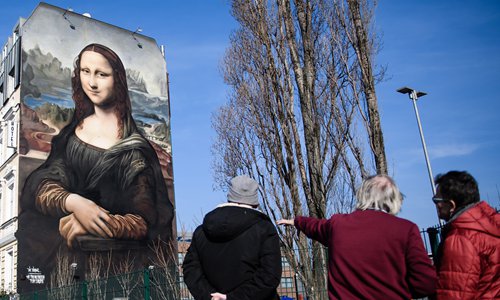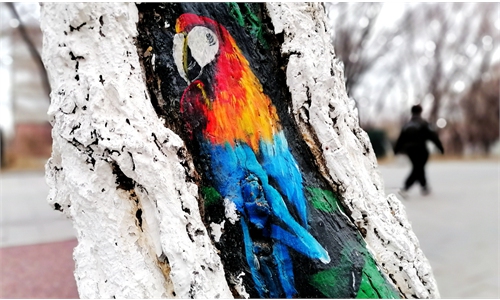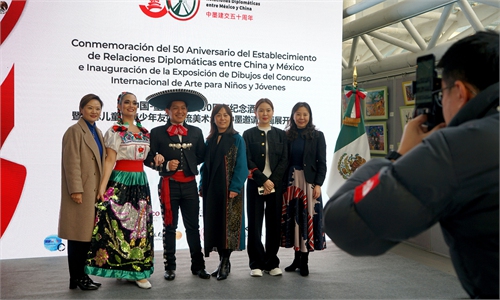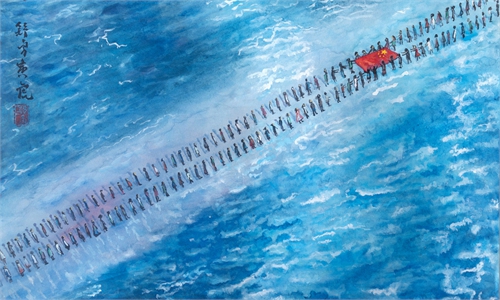ARTS / ART
Copy of ‘Mona Lisa’ portrait in Italy possibly from Da Vinci’s workshop

Passers-by talk in front of a giant replica of Italian Renaissance artist Leonardo da Vinci's painting Mona Lisa painted on the facade of a hotel in Berlin, Germany on Monday. According to media reports, the portrait, more than 16 meters high and 11 meters wide, located opposite the East Side Gallery, was made by Berlin-based artist collective Die Dixons. Photo: IC
A copy of the famed Mona Lisa portrait that has been part of the collection of the lower house of Italy's parliament since 1927, is being held up as a possible product from the workshop of Renaissance Maestro Leonardo da Vinci - possibly even bearing the brushstrokes of Leonardo himself.Da Vinci's Mona Lisa, the iconic masterwork that is one of the centerpieces of the Louvre Museum in Paris, is among the world's most famous paintings. Many copies of the painting exist, but in recent days speculation has begun to arise that Da Vinci may have had a hand in this specific copy.
"This is a copy of the painting that is in the Louvre," Member of parliament Francesco D'Uva told Italian reporters this week.
"It was made by Da Vinci's workshop, perhaps even with Da Vinci's collaboration."
Meanwhile, Claudio Strinati, an author and art historian, called the theory that the painting could have been produced by Da Vinci's studio "plausible."
Other observers quoted in the Italian media were less certain of the painting's origins, arguing it is too unrefined to be the work of Da Vinci.
A parliamentary press official told the Xinhua News Agency on Friday that the painting would be submitted for a more detailed analysis by art experts in order to shed more light on its origins over the coming months.
The Chamber of Deputies has owned the painting for nearly a century. The provable ownership lineage of the painting can be traced back to the 16th century, which could line up with the lifetime of Da Vinci.
However much of a longshot, if it is proven that the painting does indeed come from Da Vinci's workshop and included possible input from Da Vinci, it would be an extraordinary development, analysts say.



